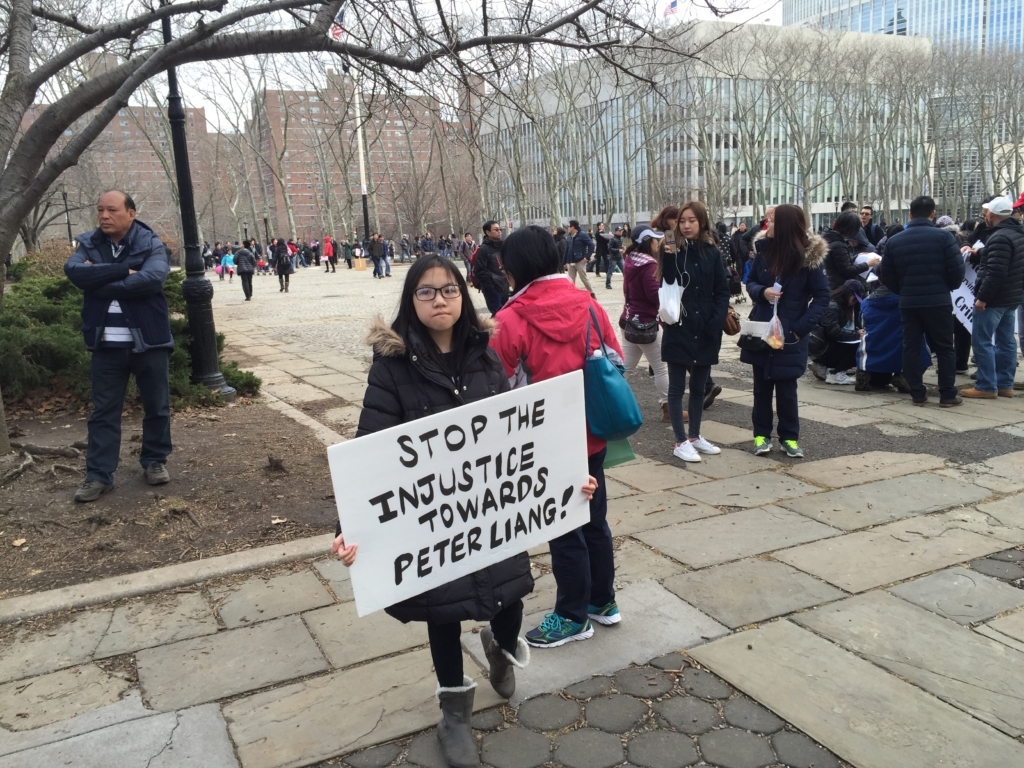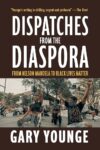The bizarre phenomenon of thousands of Asian-Americans taking to the streets to protest Office Peter Liang’s manslaughter conviction is, in a way, an exposure of white supremacy at work, though perhaps not in the way the protestors imagine. Maybe some historical context would be useful. Madeline Hsu’s 2015 book The Good Immigrants chronicles the deliberate construction of the Asian (especially Chinese) model minority identity. Particularly it traces the efforts of CIA programs in the 1970s to encourage and expedite immigration to the US for members of the educated Chinese and Taiwanese middle-class. The book does not reach into this territory, but it’s not difficult to notice that this same time period, Jim Crow was coming to a close in the American south. Race relations were in flux, with the white monied elite abandoning de jure segregation (not by choice), and groping around for a new, less explicitly racialized method of suppressing the underclass and maintaining their hold on the country’s economic power.
Here comes mass incarceration, here comes the War on Drugs (see New Jim Crow et al.). Here then also comes a deliberate government effort to import a new group of non-white, non-black immigrants, facilitating the creation of a valorized, compliant minority identity which could be placed in contrast with the criminalized, disorderly black body. If those Asian non-white people can be so good (read: docile & easily assimilated), why can’t all non-white people be thus? By obliterating all context of colonization, enslavement, and intergenerational trauma, the existence of the model minority stereotype facilitates the brutalizing of black and brown people. For the past fifty years, to be Chinese-American is to be used as a lever, ratcheting up the power of white supremacy while further depressing the status of black and brown people. (I am speaking of course of the Asian-American stereotype as it exists in the imagination of the dominant culture; this is never necessarily analogous to the lived experience of Asian immigrants.)
The protesters seem to think that Liang’s conviction provides proof of the insidious ability of white supremacy to flatten out differences between minority ethnicities and spread oppression to all nonwhite groups. One tragedy, two victims, read the signs. In fact, it reveals what has been the case for the past half-century: our phenotype has always been used as a tool of placation. (In the first half of the century, prior to white supremacy having need for us, we were simply barred from the country by law.) We are the group given select access to rights in order to stave off the charge that power is concentrated in the hands of white people only. In the same way, our bodies are easiest to discipline when political winds howl for a sacrifice. Not white but almost white; surely that should be enough. A sanction on white supremacy without actually placing any white bodies in the path of harm.
Certainly Peter Liang is a scapegoat but that does not erase his privilege. That cannot erase the fact that for fifty years Chinese-Americans have been bribed with rights to fatten them into this scapegoat, and we have taken them. We have permitted the imposition of this model identity onto our bodies, in exchange for security and a superficial freedom from violence. We have snatched up every scrap of privilege and respectability; we have docilely looked away from injustice whenever convenient; we have shirked our responsibility to interrogate white supremacy and advocated instead for toothless melting pot multiculturalism. And in moments such as this, when our not-quite-white status is thrown into relief, we stage mass protests demanding inclusion into white supremacy.
To be made into a lever, to be used as a tool, is a type of dehumanization to be sure, but not one that can be equated to the black struggle, nor combatted using the methods or language of black liberation. Injustice anywhere is a threat to justice everywhere –MLK, read the signs. But this appropriation of one of Martin Luther King’s blandest rhetorical moments can only be embarrassing. When a pronouncement may be co-opted to represent literally any feeling of hard-done-by-ness, perhaps we should seriously re-evaluate its utility.
The language of mass mobilization is intended to combat a people’s erasure, to insist on presence, to create voice and vitality where the people in charge insist no sound is made and no space occupied. Street protest is useful in its ability to make possible momentary transformations, temporary suspensions of typical power relations, a return of autonomy to the disempowered, and the immediate physical workings of their bodies. This is not the right language to protest the strictures of an Asian-American identity manufactured by whiteness.
To be the model minority is to be put up on a pedestal. Our faces have not been erased but romanticized. Our voices are not silenced but co-opted and elevated. Consider, the first mass mobilization of Chinese-Americans in decades, and it centers around a person who, having gained access to all the trappings of white supremacy, having bought into the narrative of black criminality, was finally revealed not to be quite so secure as he believed. It is difficult to listen to the unfolding protests and hear anything other than the indignation of a comprador class who believed they were as immune as the masters and discovered themselves not to be. It is difficult to hear anything but a demand to finally be given access to the last stronghold of white privilege.
Stranger still to see this demand couched in the language of street protest. What a sly stab to frame this cause as analogous to that of the black bodies whose oppression is perpetuated by our existence. What a terrible sneering affront to the losses of Ferguson and Baltimore and every other black community daily terrorized by the people who welcomed Liang into their ranks.
Race in this country is constructed as a binary, but of course this does not mean that only two racial identities exist. The census makes an elaborate show of just how much value the authorities place in recognizing a multiplicity of racial identities. The true effect of the binary is that we must always speak of race as paired, the product of two opposing forces engaging with each other. Perhaps this is why, when seeking a language for the betrayal Chinese-Americans feel at the hands of white supremacy, we fall into the well-established rhetoric of black struggle.
But we will not achieve anything by trying to represent our own grappling against whiteness in the shape and terms of the black struggle. We only make it easier to be refuted and made ridiculous. Too easily, the white establishment holds up facile narratives of exceptionalism in order to deflate our poorly founded objections. By providing us only with tools to speak of one manifestation of oppression, it erases the nuance of our position. It causes us to make a crude elision between the murder of an innocent man and the censure of a violent representative of the state. We grossly appropriate the suffering of another group, when we could be seeking the means to build genuine solidarity against white supremacy, against heirarchy, against the perpetuation of the underclass. There is not only one kind of injustice. Our methods of defiance must recognize this. Neither is there only one kind of resistance.
America’s binary understanding of race is no accident. By creating such a binary, whiteness also creates the opportunity to manipulate tertiary racial identities as levers. The first step to fighting back against this manipulation is to abandon the self-pitying idea that we lie on the same side of the binary as black people, and also the self-aggrandizing idea that we lie on the same side as whites. Any such belief only makes it more difficult to examine the true construction of our tangential role. Along with this perhaps we could jettison the fiction that “race” might somehow ever be any kind of accurate or even real representation of the constellation of cultures or skin tones in this country. Race is a mechanism manufactured by the dominant society to ensure that the underclass continues to labor in a way that generates wealth for the ruling class. The construction of race does only as much work as it needs to fulfill its function of division and physical violence laid across impoverished bodies.
The answer then is not to petition for multicultural inclusivity. It is not to co-opt the language of black struggle in a goddamn pro-police protest. Instead it is to begin to examine what it means to possess a tertiary identity in a society predicated on the binary understanding of race. Only with this understanding can we begin to form a language of resistence that genuinely gives voice to the ways in which Asian identity has been exploited by white supremacy. Only then can we seek to build genuine solidarity in the battle to dismantle racial hierarchy. Perhaps there is a unique opportunity in this moment to examine the broader causes by which an underclass is perpetuated, but it will not begin until we first leap off the pedestal of the model minority and topple it the fuck over.
This post may contain affiliate links.









